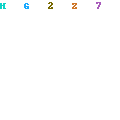Most digital cameras come with a histogram display, but what exactly is a histogram?
Simply put - it is a representation of the colours within your image. On the left, black, on the right, white; with every colour in between. The vertical height of any column shows how many pixels of that exact colour there are in your image at each brightness setting.
Now that you know what you are looking at, I'll show examples of some common things you can see.
Exposure
Ok - It can be hard to tell on your small LCD display whether an image is exposed correctly. Just take a look at the histogram and you will see quickly.
Overexposure
 There is a clear bias here towards the white end of the spectrum - unless your image is of something which is supposed to have a lot of near-white and pure white, it's almost certainly overexposed and any details in the picture will be lost to highlights.
There is a clear bias here towards the white end of the spectrum - unless your image is of something which is supposed to have a lot of near-white and pure white, it's almost certainly overexposed and any details in the picture will be lost to highlights.
Underexposure
 There is a clear bias here towards the black end of the spectrum - unless your image is supposed to be of something dark, it's almost certainly underexposed and any details in the picture will be lost to shadows and will be very hard to recover properly on your computer.
There is a clear bias here towards the black end of the spectrum - unless your image is supposed to be of something dark, it's almost certainly underexposed and any details in the picture will be lost to shadows and will be very hard to recover properly on your computer.
Contrast
Over-contrasting
 A histogram like this shows that you have failed to capture the dynamic range of the subject matter, with no distinctly obvious spikes in colour.
A histogram like this shows that you have failed to capture the dynamic range of the subject matter, with no distinctly obvious spikes in colour.
Under-contrasting
 A lack of contrast will make your picture look hazy and flat. This histogram, for example, has no shadows or highlights and would have no depth.
A lack of contrast will make your picture look hazy and flat. This histogram, for example, has no shadows or highlights and would have no depth.
 Defined spikes of some colours, no overwhelming shadows or highlights and a full spectral range.
Defined spikes of some colours, no overwhelming shadows or highlights and a full spectral range.
This concludes, I hope this simplfied look at histograms will help you understand and use them more.


0 comments:
Post a Comment